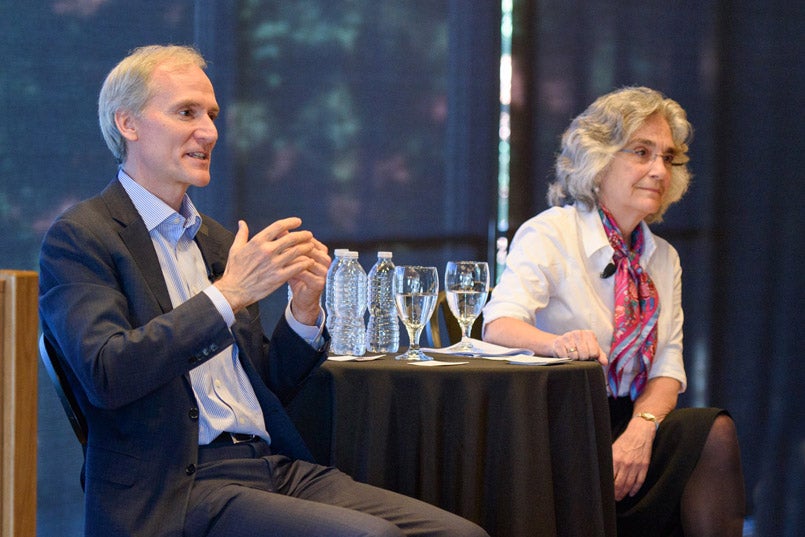February 1, 2018
The long-range planning white papers
We’re excited to have reached today a new milestone in Stanford’s long-range planning process: the release to the campus community of 37 white papers that summarize more than 2,800 ideas we received for guiding Stanford’s future.
The papers are all on a website for members of the campus community to read. We think you’ll find an inspiring, stimulating range of proposals.
The white papers were prepared by four area steering groups of people from across our community. Their task was to organize and articulate the wide variety of ideas and proposals for Stanford’s future that came in last year from students, faculty, staff, academic staff, postdocs and alumni.
Every idea and proposal that came in was read and reviewed by one or more of the steering groups.
Many of the proposals described in the white papers are about new ways in which we can expand Stanford’s academic horizons and contribute even more deeply and meaningfully to our world through teaching and research. There are big themes in this area – reimagining learning, pursuing promising new areas of research where we have an opportunity to lead, developing innovative and flexible ways of addressing problems in the world. The sense of our responsibility to the broader world comes through strongly in these papers.
As we pursue new academic opportunities, the ideas reflected in the white papers also convey a clear priority on the principles and practice of sustainability, and on caring for the people in our community. Affordability, diversity and inclusion, health and well-being, and institutional accountability are a few of the leading themes in the papers regarding the life of our own community. Sustainability was such an important cross-cutting topic that the four steering groups collaborated to produce a single white paper on it.
It’s important to know that the white papers do not represent a single, agreed-upon plan for the future of the university. Nor do they reflect choices between different ideas that were submitted. The papers are simply an effort to coherently present the wide range and large volume of ideas that our community offered.
Some ideas described in the papers are incremental in nature, some sweeping. There are tradeoffs between different ideas, and very probably competing perspectives on many of them. Many proposals are, by nature, critical of current practices at Stanford.
We welcome all of it, because we want to apply the best thinking of our entire community to create a collective vision for the future of Stanford. This is not how most university planning processes operate, but we believe your voices are critical. And we believe this process will make Stanford better and stronger as an academic institution.
What comes next in the long-range planning process? A few things:
- We want your feedback on the white papers. We’re opening a 30-day comment period for members of the campus community to provide thoughts on the papers by sending an email to stanford_planning@stanford.edu. Your comments will come to the two of us, to the co-chairs of the relevant steering groups, and to members of the Executive Cabinet.
- The Executive Cabinet already has begun reviewing the white papers, along with the individual ideas and proposals, to begin building a framework that conveys a high-level vision for the university’s future.
- Work is already under way to address a number of concerns that arose in the papers about different dimensions of life at Stanford. A story in Stanford Report today provides more information about some of these efforts already under way, and we encourage you to read about them.
- The Faculty Senate will talk more about the white papers at its Feb. 22 meeting, and faculty will be deeply involved in continuing discussions of the proposals, given the central role of faculty governance at the university. In addition, the two of us will host two conversations for members of the campus community on March 6 on campus and on March 8 at the university’s Porter Drive offices, and the long-range vision will be a focus of these conversations.
- The work to create a high-level vision will be shared with the Board of Trustees later this spring, and then with the Stanford community.
We owe a tremendous debt of gratitude to the 100+ members of the steering groups who worked so hard to create these white papers. Reading, organizing and creating conceptual frameworks for thousands of varied ideas was a herculean task. The members of our steering groups immersed themselves in this work in service to our community. We are deeply thankful.
We feel more optimistic than ever about the future of Stanford. We have many opportunities and challenges – but we also have the strength of an incredible community of people and a fervent, shared commitment to contributing to the broader world. We look forward to your thoughts and to your continued engagement in this unfolding process.
